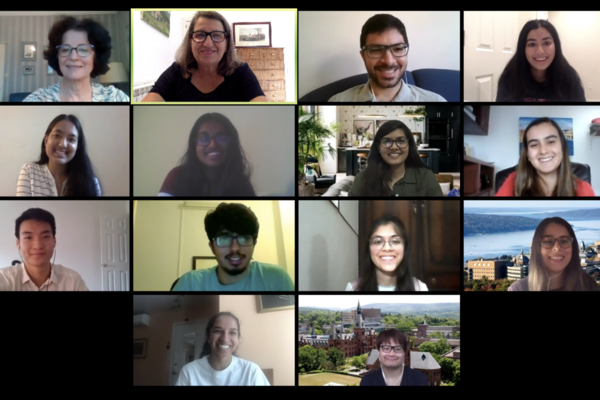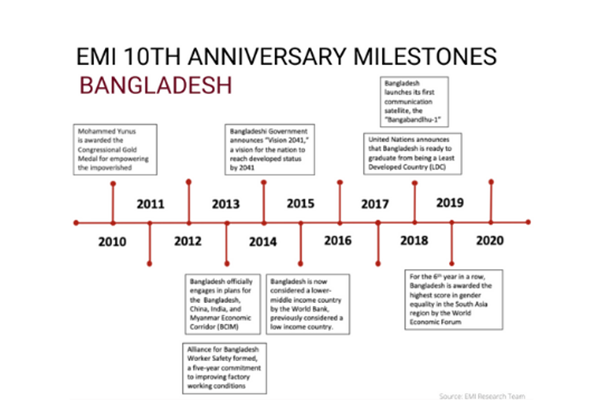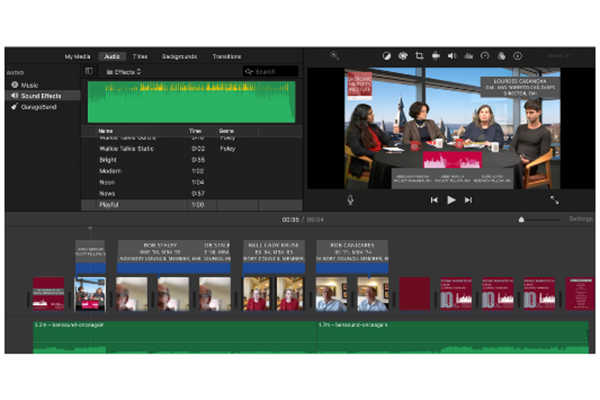Student perspective: My experience interning at Cornell’s Emerging Markets Institute

Emerging Markets Institute interns and staff
Last summer, I had the opportunity to work as an intern with the Emerging Markets Institute (EMI) through the support of Roberto Cañizares ’71, MBA ’74. This experience was, for me, an enriching introduction to emerging market countries, an opportunity to meet and learn from many amazing people, and a chance to hone my skills in digital marketing, research, and outreach.
When I began this internship, I had just finished my freshman year at Cornell’s College of Arts and Sciences and I was still undecided on where I wanted to focus my studies; much less, on what I saw my career path looking like. I had been strongly considering economics, as I had always had a strong suit for mathematics and had enjoyed the microeconomics and macroeconomics classes I had taken at Cornell so far. (It was actually my macroeconomics professor who suggested EMI as a possible summer internship). I hoped that my internship at EMI would improve my understanding of emerging market economies and provide me with an introduction to economic and quantitative research.
Expanding social media
Prior to beginning my internship, I had a strong interest in marketing and outreach, so I happily joined EMI’s Social Media Team. Throughout the summer, I worked closely with the other members, creating engaging content and developing new post ideas.
When I joined EMI, it already had a strong social media presence across multiple platforms— Instagram, Facebook, LinkedIn, and Twitter—and was posting consistently across all of them. Once I joined, I began adding to some of the existing post series, such as research posts and blog features, and also started two new series. The first centers on world news, featuring current emerging markets headlines that EMI would reshare across our platforms along with a short summary and commentary on the news. Throughout the summer, we featured a variety of articles covering a range of topics including Indian IT consultancies, the USMCTA, Chinese M&A, and more. I believe this series was a successful way to tie in current events to our channels and attract viewers to interesting headlines that they may not have noticed on their own.

Working with some of the other interns, Mihika and Andrew, who were working to compile the most important milestones of E20 countries over the last ten years for our annual report, we developed a new social media series showcasing these milestones for each country. This series is meant to introduce each country and highlight some of their most interesting developments over the decade. These milestones connect to the theme of this year’s report: Ten Years that changed Emerging Markets.
A social media post I helped create focused on economic milestones in BangladeshSomething I hoped to improve on with EMI’s Social Media is working to develop eye-catching and high-quality content through design. I want our viewers to be able to see a post in their feed and, without looking too closely at the account, recognize it as an EMI post through our branding and theme. By working towards this goal, we can build a consistent EMI brand. I believe that since the beginning of summer, we have overall improved our design efforts greatly. The social media team has been consistently using the colors maroon and gray and including our logos in posts, which ties them all together. In addition, Canva has proved to be an amazing tool in developing well-designed, eye-catching content.
Looking forward, I believe that EMI’s social media team should continue to take risks and try out new ideas. For example, when announcing our 2020 annual conference, we attempted to make an Instagram banner on our profile spread across multiple posts. Although it did not work out perfectly, it was a good attempt at trying something new and is something I am sure we will try again in the future.
In addition, the number-one thing that I believe EMI’s social media team needs to focus on is improving our engagement. While our follower numbers are large across channels, our engagement rates are quite low, as most of our followers seem to scroll past and ignore our content. Whether it be rethinking our content, listening to our audience’s interests, or changing up our posting schedule, engagement is the next big hurdle in front of us.
Outreach task force
During my internship, I was the secretary and facilitator of the outreach task force, one of four task forces created to continue discussions from the EMI retreat in March. This task force consisted of EMI team members, faculty, alumni, and EMI Fellows. Together, we aimed to develop ideas on how to improve EMI’s outreach.
Taking part in these meetings was a fascinating experience, as I was able to meet and hear from a variety of people and learn more about EMI’s goals and the importance of outreach in our mission. This is where I came to understand the accuracy of EMI’s motto: Building Bridges and Encouraging Dialogue. It became clear to me that EMI’s goals and the focus of our discussions were heavily centered around encouraging ties among students and universities through the conference, a mentorship program, digital marketing, and more.
As we brainstormed ideas, one topic of consideration that was brought up was how to get undergraduates more involved. This topic resonated with me and the other interns, as I was an undergraduate who knew little about EMI fewer than three months ago. Seeing the impact and experiences I had this summer, I wondered how impactful EMI could be if it expanded its programs to undergraduate students.
I know that in a few weeks, EMI is announcing its emerging markets “theme,” enabling students in the business schools to take classes focused on emerging markets. As EMI continues to expand, I hope that more undergraduate studies encompass emerging markets, as well.
Research: databases, Indian multinationals, and ranking
Throughout the summer, EMI organized multiple workshops for interns on different databases, including Capital IQ and Bloomberg. As I had never worked with these databases before, these workshops were incredibly helpful. In addition, EMI team members were always receptive and responsive to any questions that came up.
A few weeks into my internship, I began working with Manisha, and EMI Fellow and recent graduate, who was working on a chapter for the annual report centered on Indian multinationals. The first chapter covers the changing business economy of India over the last decade and how the different business sectors such as agriculture, automobile, and technology had changed and adapted. The second chapter features some of India’s top companies, such as Reliance Industries and Tata Motors, along with a few of the biggest new startups.
Working with Manisha, I was able to apply the database skills that I had been learning to develop graphs illustrating the changing economy and to compile data into small “vignettes” or profiles for each of the featured Indian companies.
Another project I worked on is the development of a ranking system for emerging market countries. This project is still in its early stages, so I was able to take part in brainstorming what factors should be included (such as growth, sustainability, diversity) and the early formulation of the ranking ideas. It was especially interesting to take part in the first steps of development and I am excited to see what comes of this ranking system.
Video series: looking back and looking forward
Over the summer, I worked with EMI on a large video project for which we edited and published interviews with members of EMI’s Advisory Council and EMI Fellow alumni. While editing and reviewing these videos, I was able to learn a great deal about emerging markets and how they have changed over time from the interviewees.

One video I worked on—the Foundation of EMI, a compilation featuring each of EMI’s founders as they discussed the origins of the Emerging Markets Institute at Johnson—allowed me to see how important and influential EMI was at the time. As Bob Staley ’58, MBA ’59, one of the founders, put it: “My thinking is that any company that has great products is going to want to sell those products in every market they can. And since only 5 percent of the people who live in the world live in the United States, that means, ultimately, you’re going to have to be selling in an international, global context.” This quote resonated with me as it clearly allowed me to see that the creation of EMI and new focus on emerging markets was a necessary shift for Johnson to take as a business school, especially in the global world we live in today.
Reflection
Working with the Emerging Markets Institute was an impactful experience, as it allowed me to learn about emerging markets and quantitative research while gaining experience and skills in these areas. I am grateful to the Emerging Markets Institute at Johnson, Lourdes Casanova, Mumuksha Khicha, Manisha Barnwal, Daniel Dos Anjos, and the rest of the EMI team for being my coworkers and mentors for the summer. This experience has made me recognize the importance of emerging markets in business and policy and helped guide my interests as I continue my studies.
About Meghana Gavirneni ’23

Meghana Gavirneni is a rising sophomore in the College of Arts and Sciences at Cornell University and was an EMI summer intern. She plans on double majoring in economics and philosophy.
